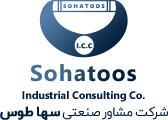

What is FCC Certification?

The United States has established standards for products that have the potential to cause electromagnetic interference. These standards aim to reduce radio frequency interference between electronic devices and ensure the safety of the American public. Any electronic device or equipment sold in the United States must meet these standards and not interfere with other electronic products. The Federal Communications Commission (FCC) is responsible for creating, enforcing, and implementing regulations outlined in the Communications Act of 1934 and the Telecommunications Act of 1996. As a government agency, the FCC oversees various forms of telecommunication within the United States, including radio, television, digital cameras, Bluetooth, wireless devices, and a wide range of RF electronics.
Having an FCC certificate indicates that an electronic device has undergone testing to meet FCC standards and has been deemed satisfactory. However, the certification does not guarantee the safety or longevity of the product, but rather signifies its compliance with regulated limits for ionizing radiation. It should be noted that the certification does not specify the device's manufacturing process. FCC approval is granted when an electronic device adheres to FCC emission rules and regulations and has successfully passed tests to comply with FCC standards.
The process of compliance testing and meeting the requirements set by the Federal Communications Commission can be highly perplexing. This can lead to significant frustration for manufacturers and electronic distribution companies.
What Products Require an FCC Certificate?
In order to adhere to regulations, set by the Federal Communications Commission, RF equipment sold in the United States must undergo testing to ensure it meets the necessary standards. This testing helps to control the amount of intentional and unintentional electromagnetic radiation emitted from the equipment, keeping users safe. FCC certification can be granted for a variety of RF emitting devices, including, but not limited to:
electronic products
mobile phones
wireless local area networking equipment
Bluetooth devices
remote control transmitters
land mobile radio transmitters
wireless medical telemetry transmitters
cordless telephones
walkie-talkies
Power adapters
telecommunication equipment
IT equipment
electromagnetic compatibility products
equipment and protective systems intended for use in potentially explosive
Atmospheres
radio and telecommunications terminal equipment
What are FCC Regulations?
The standards of the Federal Communications Commission (FCC) vary depending on the specific radio frequency emitting device under examination. To determine the appropriate regulations and testing procedures required for authorized distribution, the FCC has established different categories. These categories, such as FCC Part 11, Part 15, Part 18, Part 22, Part 24, Part 68, Part 90, and Part 95, help categorize and specify the testing parameters. FCC Part 15 certification, which focuses on regulations for television receivers, is one of the most commonly sought approvals for devices.
What is the Process for Obtaining a Certificate?
The EMC directive of the FCC includes three distinct procedures for issuing certificates of compliance for electronic devices. The specific authorization process relies on factors such as the device's type and power of radio frequency emissions. The FCC will assess the appropriate screening method that your device must undergo, based on its intended purpose in manufacturing or distribution.
Verification (47 CFR Section 2.902)
The most straightforward form of authorization to obtain an FCC certificate is through verification. Verification is necessary for digital products that contain Part 15 components, which ensures compliance with Part 15 certification. When a device is classified as Part 15, it indicates that it either lacks a radio or contains a pre-approved radio. Part 15 devices solely require verification and are not obligated to obtain approval or display a certified FCC logo.
Declaration of Conformity (Doc) (47 CFR Section 2.906)
The process of obtaining an FCC certification can be simplified by going through a declaration of conformity (Doc). This compliance process is particularly suitable for devices categorized as personal computers or their peripherals and is considered the second easiest option. Such devices are referred to as Part 18 devices, and they must undergo testing in an accredited laboratory to measure the levels of radio frequency emitted. If these products meet the regulations, they can be stamped with the FCC logo to demonstrate their approval.
Certification (47 CFR Section 2.907)
The FCC certification process is extremely challenging to obtain. It is reserved for devices that have the potential to emit substantial levels of radio frequency interference and pose significant risks to the public. Only an official Telecommunication Certification Body (TCB) can authorize and issue certifications for radio frequency devices. The TCB carefully reviews the product's documentation and test outcomes once the necessary testing has been completed.